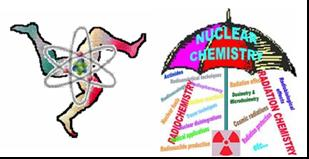Speaker
Prof.
amran majid
(universiti kebangsaan malaysia)
Description
Previous studies have shown that the natural radioactivity contained in the building material was significantly influenced the dose rates in dwelling. Exposure to natural radiation in building has become more important since almost 80% of our daily live are spend indoor. Thus, the aim of the study is to assess the radiological risk associated with natural radioactivity in soil based building materials to dwellers. A total of 13 Portland cement, 46 sand and 43 gravel samples were obtained throughout the Peninsular of Malaysia and were analysed for their radioactivity concentrations. The activity concentration of 226Ra, 232Th and 40K in the studied building materials samples were found to be in the range of 3.7 Bq kg-1 to 359.3 Bq kg-1, 2.0 Bq kg-1 to 370.8 Bq kg-1 and 10.3 Bq kg-1 to 1949.5 Bq kg-1 respectively. The activity concentration of 226Ra, 232Th and 40K found in the studied building material samples were used to calculate the annual radiation dose rates (μSv year-1) received by dwellers for 1 to 50 years of exposure using Resrad-Build Computer Code. The rooms modelling were based on the changing parameters of concrete wall thickness and the room dimensions. The annual radiation dose rates to dwellers were found to increase annually over a period of 50 years. The dose rate in building was significantly influenced by the thickness of the concrete. The self-absorption occurred when the concrete thickness was higher than 0.4 m. Results of this study show that the dose rates received by the dwellers of the building were proportional to the dimension of the room. In general the study concludes that studied concrete building materials in Peninsular of Malaysia does not pose radiological hazard to the building dwellers since the evaluated dose rates were lower than the recommended limit of 1500 μSv year-1 for building materials.
Keywords: Natural radioactivity; Dose rate; Building materials; Resrad-Build Computer Code.
Primary author
Prof.
amran majid
(universiti kebangsaan malaysia)
Co-authors
Mr
Aznan Fazli Ismail
(universiti kebangsaan malaysia)
Prof.
Ismail Bahari
(universiti kebangsaan malaysia)
Dr
Redzuwan Yahaya
(universiti kebangsaan malaysia)
Dr
Samudi Yasir
(universiti kebangsaan malaysia)




